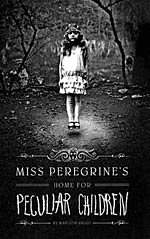
![]() verkisto
verkisto
7/26/2016
![]()
This book has an extraordinary start. It presents the main character and his relationship with his grandfather, paints a broad overview of their lives, suggests the importance of fairy tales in childhood and through adulthood, and introduces the reader to the method of storytelling in this unique book -- using found photographs to tell a fictional story. It's a good bit of information to convey, but the author does so in just a few pages, and makes the entire section readable, compelling, and interesting. It hasn't been since reading the first few dozen pages of Justin Cronin's The Passage that I felt that kind of connection to the characters in such a brief time.
Unfortunately, The Passage fell apart for me, partly because of its lofty premise, and because it ended with the suggestion that it was only the start of a larger series. Miss Peregrine's Home for Peculiar Children had a premise that matched its depth just perfectly, and was told in such an extraordinary way that I didn't care when the novel ended with the suggestion that it, too, is just the first book in a larger series. I started the book on a Saturday night, read about 100 pages, and then finished the rest of it on Sunday afternoon. If that's not enough to suggest that this book is a great read, then I don't know what else to tell you.
Riggs' method of storytelling -- using the aforementioned photographs -- started off as a gimmick, but became something to anticipate in the ongoing story. The first few photographs were odd, to say the least, but as the story progressed, they became less odd, simply a means to illustrate some of the main points of the story. I resisted the urge to flip ahead to see what the other photographs would be, and it paid off. Reading the book at its own pace revealed the photographs at just the right time, and I would suggest that anyone else reading this book do the same.
I don't want to reveal too much of the story -- the fact that it's about "peculiar children," and features on the cover an antique photograph of a girl apparently levitating should give you enough of an idea to get you started -- because it's just such a joy to discover. The narrative is compelling, and the characters sympathetic, and tying it all together is some language that captures the moments and the meaning behind them in a wonderful way. I don't know that it will become a classic, but I will say that I am eager to read the next book in the series.
I guess now I know how George R.R. Martin's fans feel.